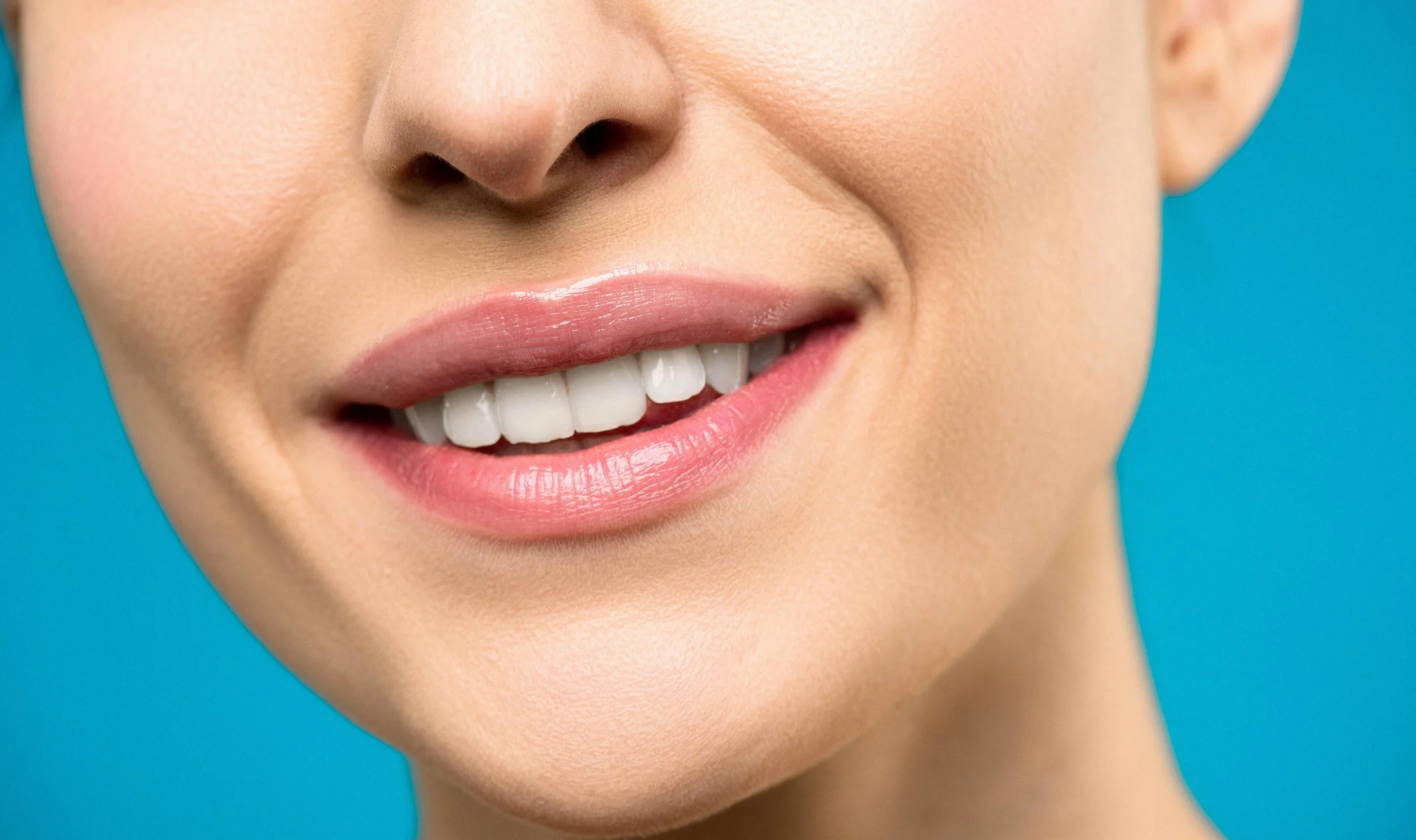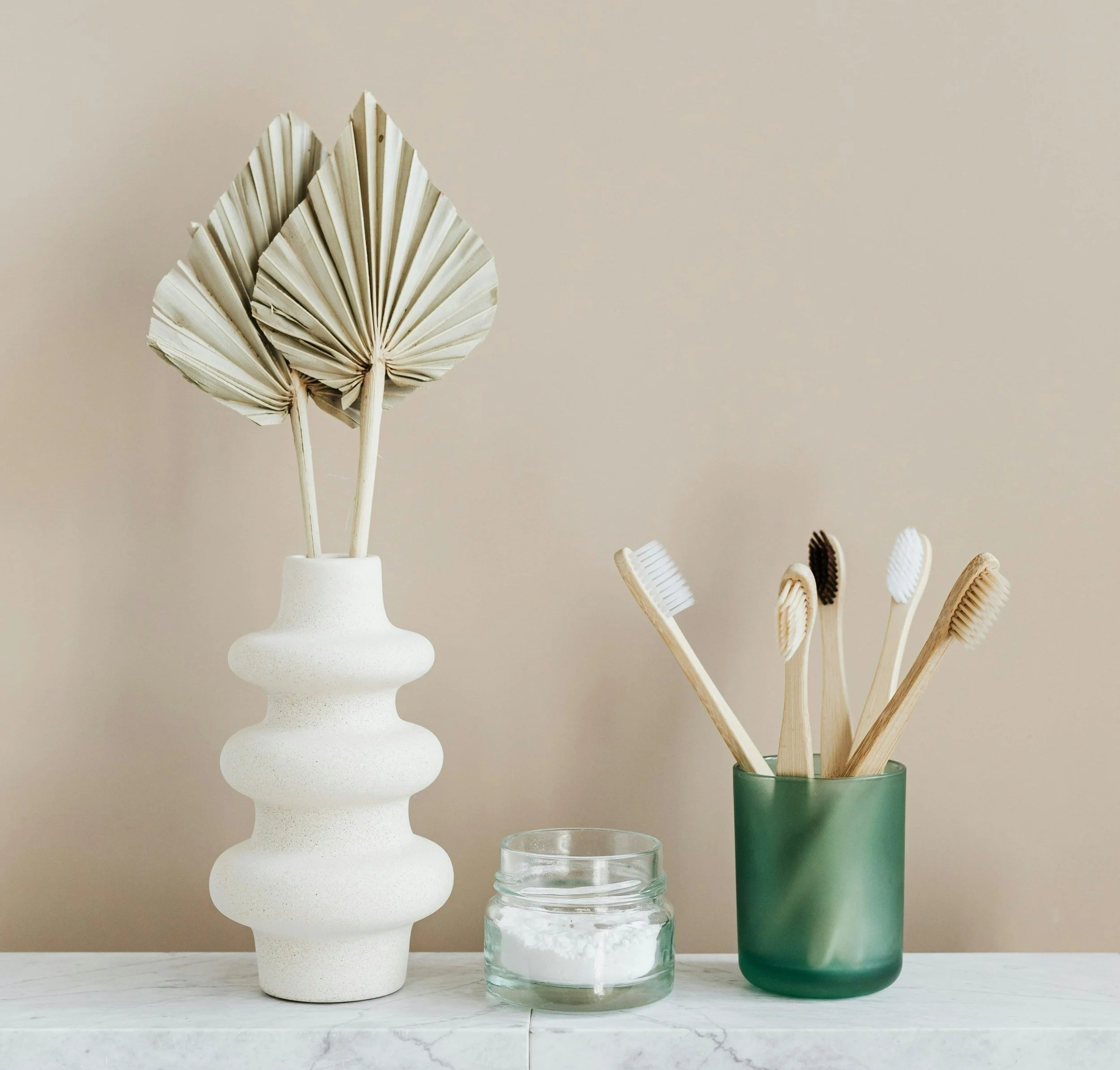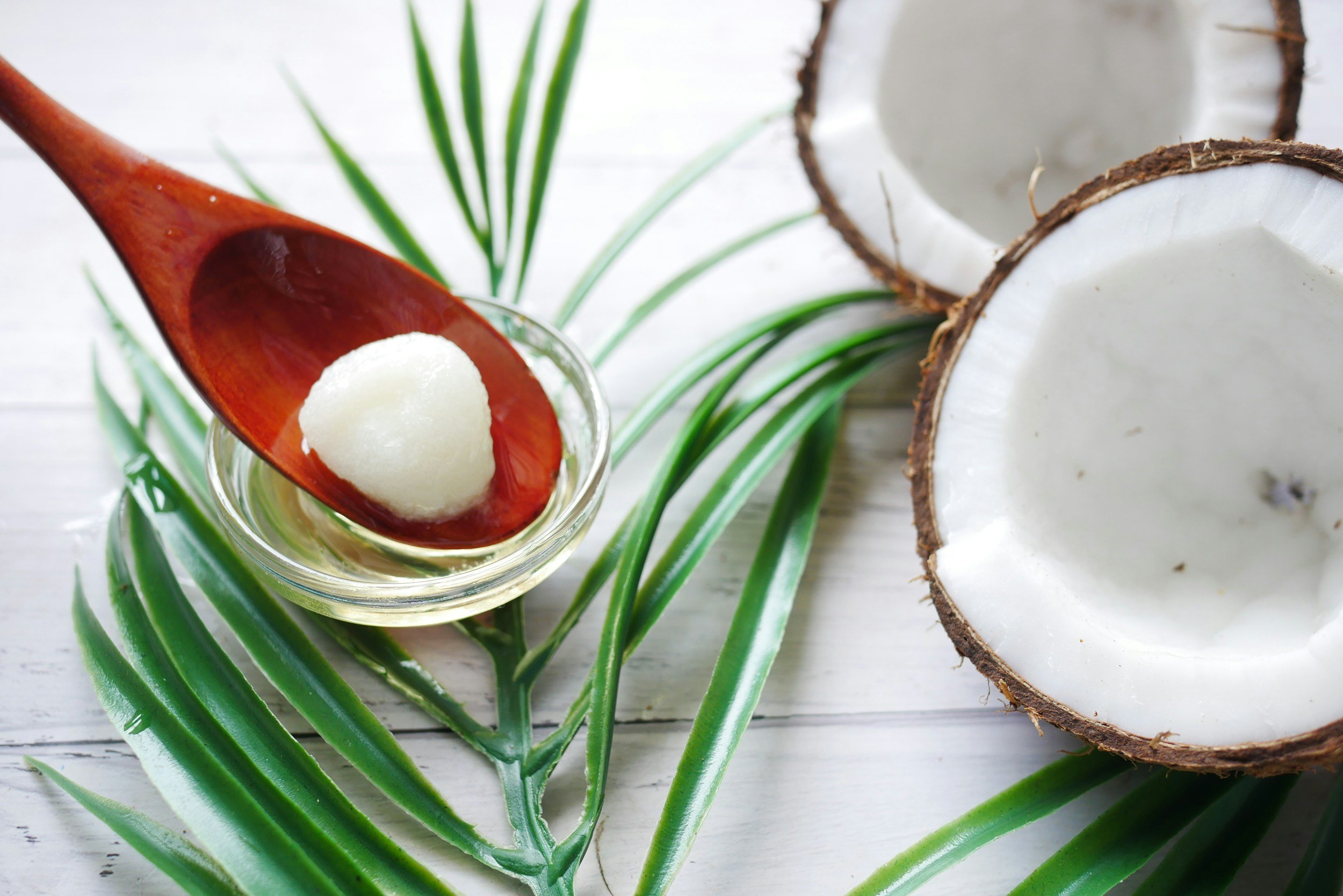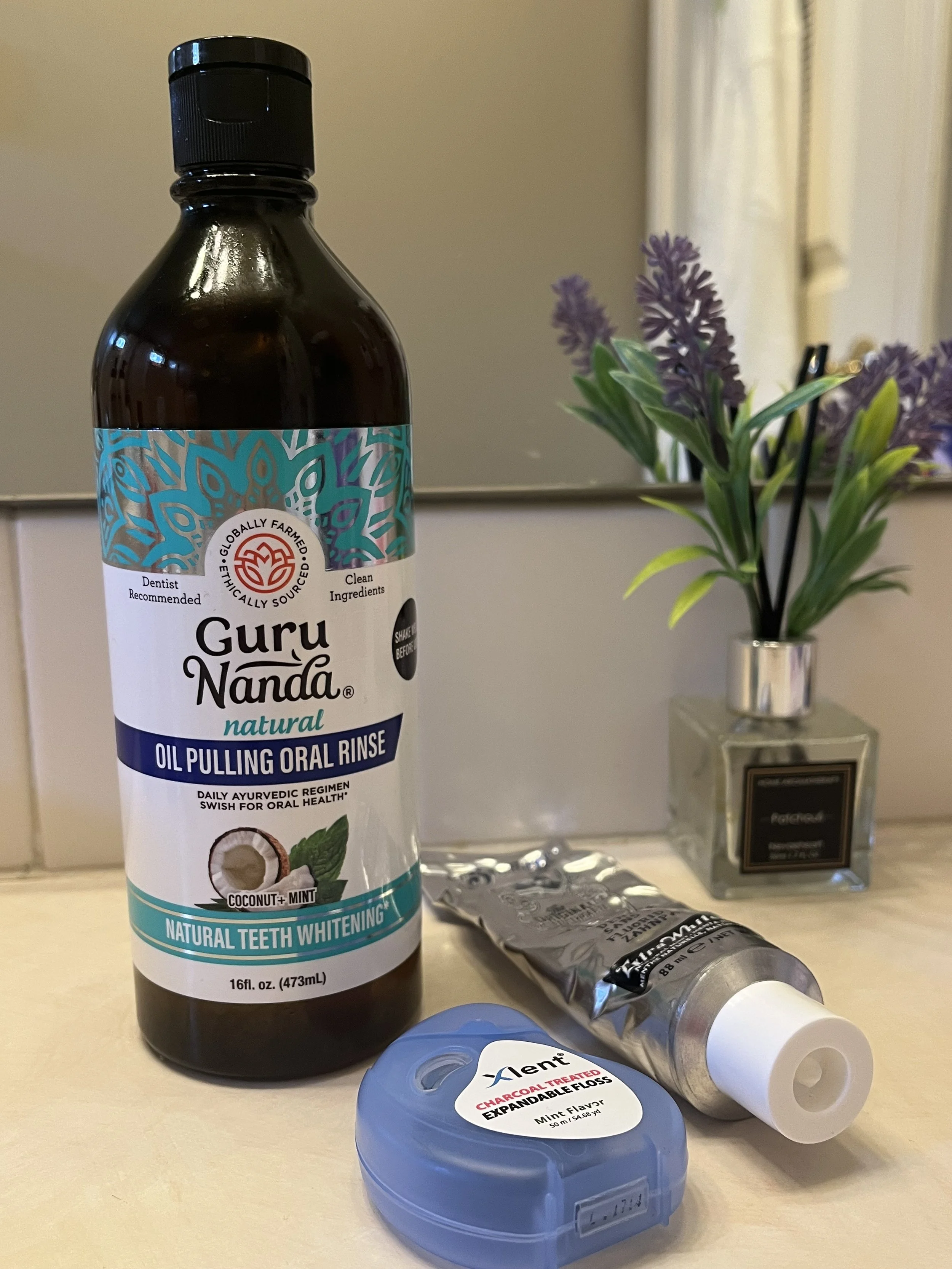White Pearls -Naturally
White teeth—Americans love them. I grew up in Finland surrounded by smiles that leaned more yellow than white, and that was just normal. But when I moved to the U.S., I was surprised by how many people had ultra-white teeth—whiter than I thought was naturally possible!
When I lived in California, my dentist gave me a whitening kit. I was excited to try it… until it stung my teeth so badly I couldn’t bear to use it more than twice. After that, I swore I’d never put my teeth through that kind of pain again. Still, I wanted to gently brighten my smile, so I started using whitening toothpaste instead.
🦷 The Cavity Years & a Little Dental Irony
I had my fair share of cavities growing up—and having braces didn’t help. Later, while pregnant and living in Japan, I found out that getting cavities treated during pregnancy wasn’t allowed. By the time I gave birth, I had a list of fillings to catch up on. For a few weeks, I went to the dentist weekly to get everything fixed. It might sound strange, but I actually enjoyed those visits—they felt like quiet “me time” during a busy season of life.
🥥 Discovering Coconut Oil & My First Try at Oil Pulling
During that time, I read a book called Coconut Cures by Bruce Fife and started adding coconut oil to my coffee and baking. I also gave oil pulling a try—a traditional Ayurvedic practice where you swish oil in your mouth before brushing. My teeth started looking a little whiter, which was a nice surprise! But after we moved to California, I tried a whitening product —and quickly pushed the whole idea of teeth whitening out of my mind.
🎧 A Podcast Changed Everything
Recently, I listened to a podcast featuring Nadine Artemis, who spoke about natural dental care and oil pulling. In another episode, Dr. Guru Nanda explained how oil pulling works and why it’s still relevant today. I ordered his oil pulling product and liked it much more than using plain coconut oil—the added herbs and minty taste made it much more enjoyable.
Oil pulling helps draw toxins and tartar from the mouth and between the teeth. As you swish, the oil dissolves and traps food particles and tartar, effectively "brushing" your teeth in the process. Oil pulling traditionally uses sesame oil, but coconut oil is now a popular choice because of its natural whitening properties. You can also use olive oil if you prefer.
🌀 How to Oil Pull (It’s Easier Than You Think)
Oil pulling is an ancient Ayurvedic practice traditionally done with sesame oil, though today many people prefer coconut oil for its natural whitening properties.
Before brushing your teeth, swish 1 tablespoon (15 ml) of oil in your mouth for 10–15 minutes.
Spit the oil into the trash (not the sink—oil can clog drains!).
Rinse your mouth, scrape your tongue, and brush your teeth as usual.
Doing this 2–3 times a week is plenty—no need to overdo it.
🧴 Switching Toothpaste & Rethinking Oral Care
Around the same time, I started learning more about the ingredients in commercial toothpaste. I looked for one without sodium lauryl sulfate, which is known to cause canker sores—and ever since switching, I haven’t had a single one.
I also stopped using fluoride after hearing Dr. Staci Whitman, DMD, speak about its possible risks.
🌿 My Current Natural Oral Care Routine
Brush twice a day with Dr. Sheffield’s Natural Toothpaste
Floss at night before brushing with expandable charcoal floss
Oil pull every second morning using Guru Nonda’s oil pulling oral rinse
Final Thoughts
My mouth feels healthier, my teeth look naturally brighter, and I finally have a routine that feels gentle, nourishing, and sustainable. If you’ve ever struggled with sensitivity from whitening kits or just want a more natural approach, oil pulling might be worth a try.




